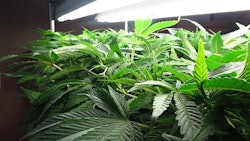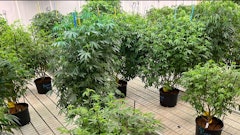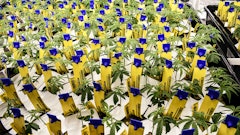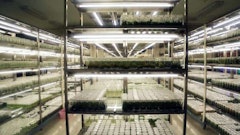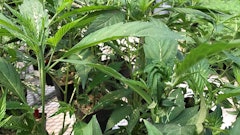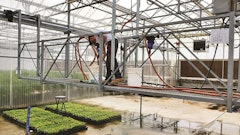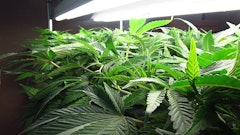
Cloning is one of the most important and arguably one of the most intimidating processes in cannabis cultivation. It is often difficult and frustrating for new cultivators to grasp. One of the most important things to remember is the tried and true KISS model (keep it simple, stupid). No. 1: Start with the bare minimum of variables and only add more when you have exhausted your options with your current set up. I guarantee you, this will save many headaches.
Caution: Just as in the nutrient market, there are companies popping up left and right offering the “next big thing” in cloning gizmos and gadgets. While innovation is one of the most exciting aspects of the cultivation industry, the last thing any cultivator wants is to set his or her production schedule back three, four, even five weeks because of a major or even minor die-off in the nursery.
There are several methods of propagating rooted cuttings, from simply leaving the cuttings in a glass of water (which is not recommended) to purchasing the latest aeroponic cloner from any number of manufacturers. Here are some of the main methods and a critical analysis of their pros and cons.
Aeroponic Cloning
Aeroponic cloners have come a long way since the crude “bubble cloners” made of coffee cans that many growers constructed in their basements, although the basic premise remains the same. This method uses a nutrient solution to keep suspended cuttings moist in a “light tight” area until (hopefully) shiny, white roots start to appear.
Most “plug and play” aero cloners available today are similar in design and function: A heavy duty, “light tight” plastic shell containing a PVC manifold and submersive pump, the top punctuated with holes filled with neoprene discs that hold the cuttings upright for the duration of their stay. Most manufacturers offer various sizes to fit individual needs, the biggest maxing out at about 180 sites.
PROS
Fast results. Many growers feel they get faster rooting with aero cloners than when cloning into a medium. When used correctly, a bank of aero cloners can provide a facility with healthy, ready-to-transplant clones in eight to 11 days.
Ease of Use. Many aero cloners truly are “plug and play.” Pop open the box, follow the set-up instructions (many times with included samples of “rooting” nutrients) and get to cutting. They can take the guesswork out of cloning for beginning cultivators.
CONS
Electricity. The biggest downside to aero cloners are their reliance on electric pumps to keep the nutrient solution circulating and the cutting sufficiently wet. It is one of the worst feelings any cultivator can have to walk into the nursery first thing in the morning to a very sad cloner because of a popped breaker or overnight power outage.
Cleanliness. Aero cloners can get very gunky after a few cycles of use, and clone success rates can drop dramatically the dirtier (and older) a cloner gets. Manifolds need to be disassembled and cleaned. Spray heads and neoprene discs need to be replaced on a regular basis, and any nutrient build-up has to be diligently scrubbed away from the inside of the shell to keep your cloners operating at peak efficiency.
Rock Wool Cloning
Another path a cultivator can go down on the road to roots is the rock wool cube. This material is made by heating glass to a very high temperature and, much like cotton candy, is spun into fine filaments, which are then molded into cubes or slabs. The filaments create enough air space for roots and water to move throughout the cube while also providing stability to the cutting while it is rooting.
Rock wool comes in various sizes from ½-inch to over a foot in diameter. As a general rule, the smaller the cube used, the faster one will see roots. Though, by using a bigger cube for propagation, one can be sure that the plant has had plenty of time to create a strong root system by the time roots pop out of the cube. Many growers who choose rock wool as their overall growing medium also clone into small rock wool cubes for ease of integration. However, rock wool can be utilized by anyone regardless if they are transplanting to a soil mix, coco coir or into hydroponic or deep water culture systems.
Rock wool can be intimidating to some growers, especially those that are moving to it from aero cloning. Most problems occur because cultivators attempt to be too hands-on with their rock wool. Remember: Keep it simple. Use a simple cloning solution and a simple cloning gel. The more products you add to the mix, the more variables to sift through and that can potentially cause problems.
PROS
No submersive pumps. The beauty of rock wool is that your clone’s success isn’t tied to an electrical plug. If the power in your facility goes out overnight, you may come into work to find a bunch of sad rock wool clones, but a few hours without light is not nearly as worrisome as a few hours without a working pump, as clones are hanging in space in an aero cloner.
Ease of cleaning. Rock wool cubes are, by design, a one-shot system. This means no need to take apart manifolds or scrub pumps. Just a quick wipe down of the domes and undertrays with soapy water and you are ready to reset for another round.
CONS
High learning curve. You will kill some clones while you are dialing in your processes. It is fairly easy to hit 90 percent-plus success rates with rock wool just as with aero cloners once you get your systems down, but rock wool is not nearly as “plug-and-play” as a brand new aero cloner.
Unforgiving. If you let these cubes dry out, there is no coming back.
Peat Plug/Jiffy Cube Cloning
Peat plugs are another way to create rooted cannabis cuttings. Peat is composed of partially decomposed organic plant matter that is primarily collected from bogs, swamps and other marshy ground. One of the most common plants present in peat is Sphagnum moss, although many different plants can be present. Peat has been used as a growing medium/amendment for hundreds of years, which makes this method of propagation a good choice for cultivators moving toward a completely organic process.
PROS
Ease of set up. Peat plugs come pre-moistened and pre-charged with a weak nutrient solution, which makes for a fast set-up. Most brands come prepacked into 50-count plastic trays, which means a humidity dome is the only additional piece of hardware required to get cloning.
CONS
Salt build up. Because most brands of peat plug come with a slight nutrient charge and are pre-moistened, they can be susceptible to drying out while in transit/storage. When this happens, the nutrient salts can become concentrated in pockets inside the peat cubes. When re-moistened, these deposits can shock cuttings if the stems come in contact with the salt pockets.
Other Considerations
Once you’ve chosen your method of cloning, you can start thinking about rooting gels and powders. They have been available in the agriculture industry for many years. The active ingredient in most current gels and powders is indole-3-butyric acid (IBA). IBA is a naturally occurring plant hormone in the auxin family. It can be found in species of the Salix (willow) genus. A steep of willow bark also can create a weak rooting solution. IBA works with other hormones in the stem of the cutting to encourage root development. A dip in an IBA gel is not necessary to achieve rooted clones, but it can significantly shorten the rooting time in all methods of cloning.
The most important concept to understand with any method of cloning is the idea of “hardening off” the cutting — getting the plant to think and act like a fully-fledged plant as opposed to an unrooted cutting. This is achieved by slowly exposing the rooting cutting to the general environment of the grow.
In aero cloning, this step is done for you because of the lack of humidity domes on most modern aeroponic cloners. This is the reason some clones seem to droop when first placed into aero cloners. They are going through the “hardening off” right from the get-go.
In cloning situations where a humidity dome is being used, the goal is to get the root cuttings to tolerate the main grow environment as quickly as possible. Many cultivators new to cloning make the mistake of leaving the dome on the tray with the vents closed throughout the rooting process, only to have a die-off at transplant time because the clones are still used to having all the humidity and warmth they want.
By slowly starting to open the vents and by taking the dome off for short periods starting the day after the clones were cut, a cultivator can expect to have the dome off completely in four to five days. Misting the inside of the dome is an unnecessary step in all but the most arid of conditions.
Successful cloning is a skill that can only be learned by doing. Do not be discouraged. With healthy mother plants, you should have a steady stream of cuttings. Just as you can’t make an omelet without breaking the eggs, you will never find your cloning groove without sacrificing a few clones.







